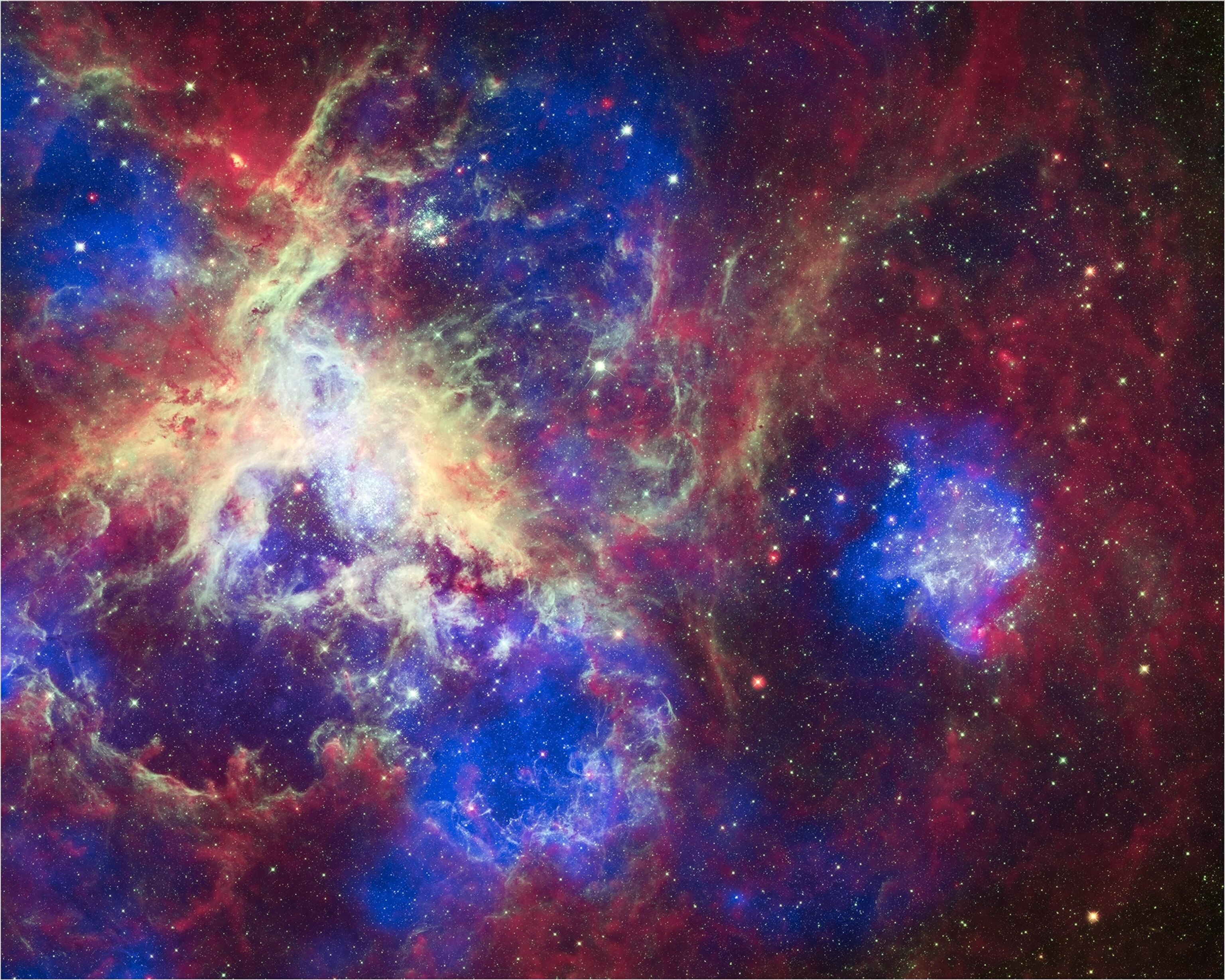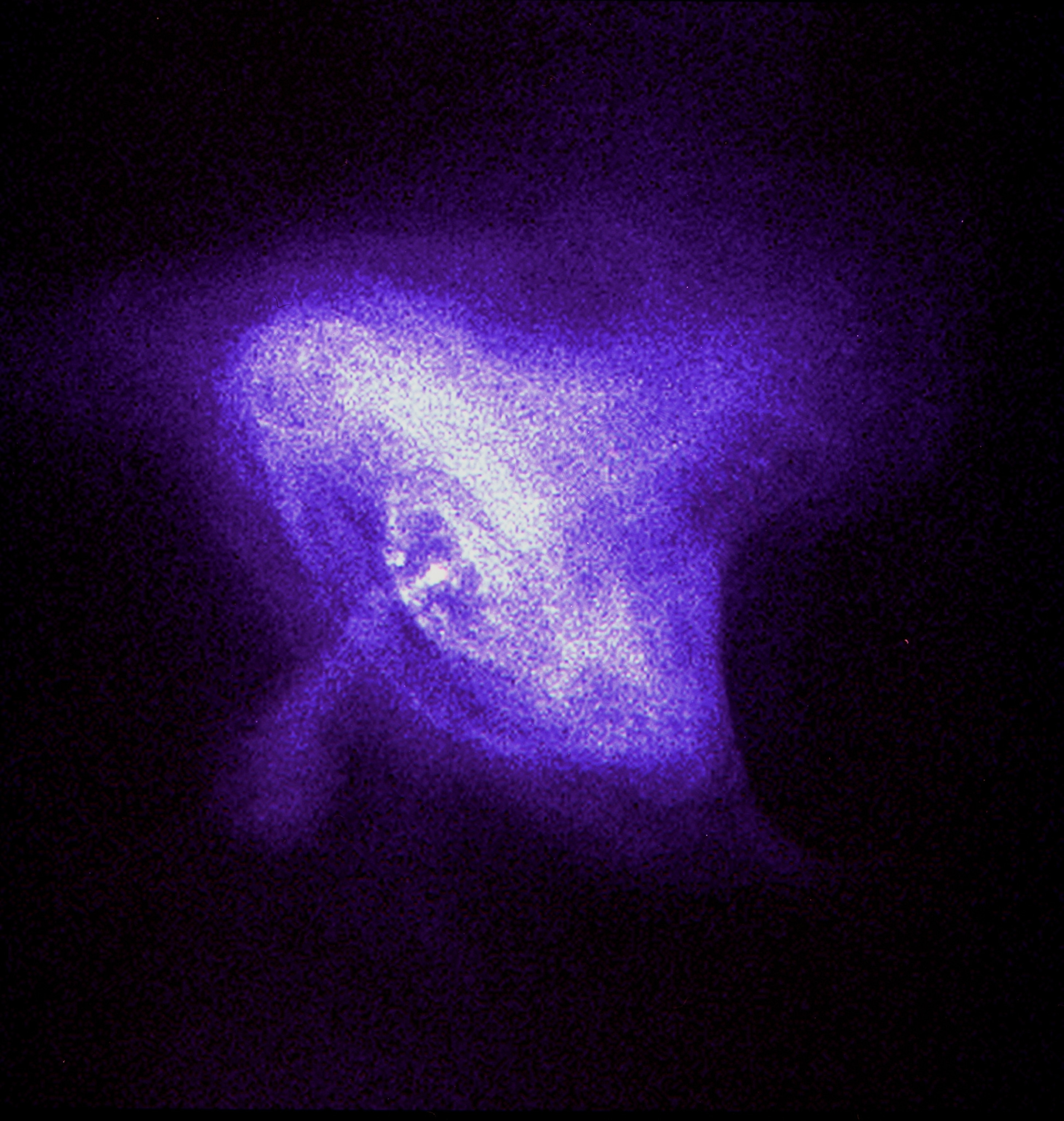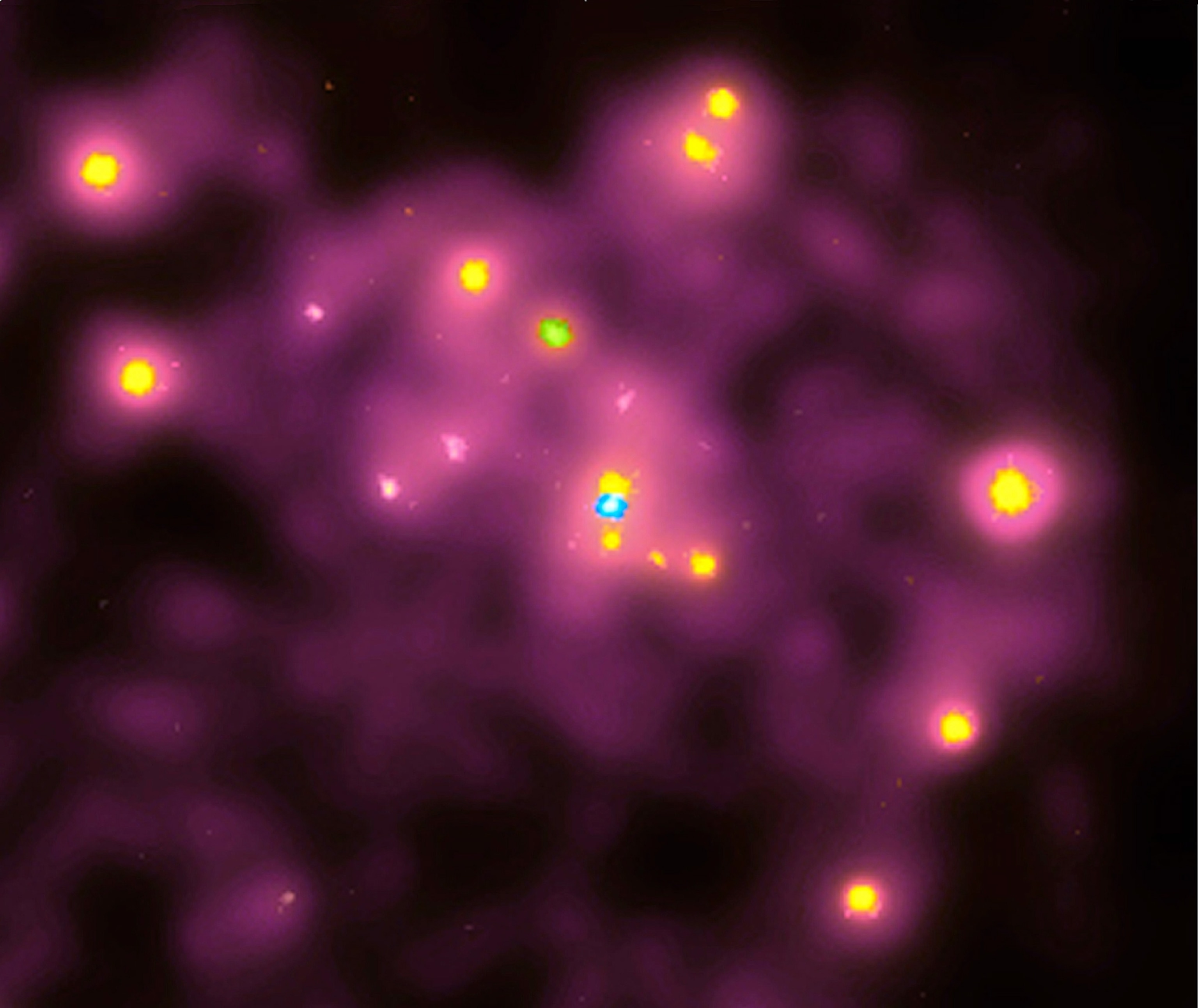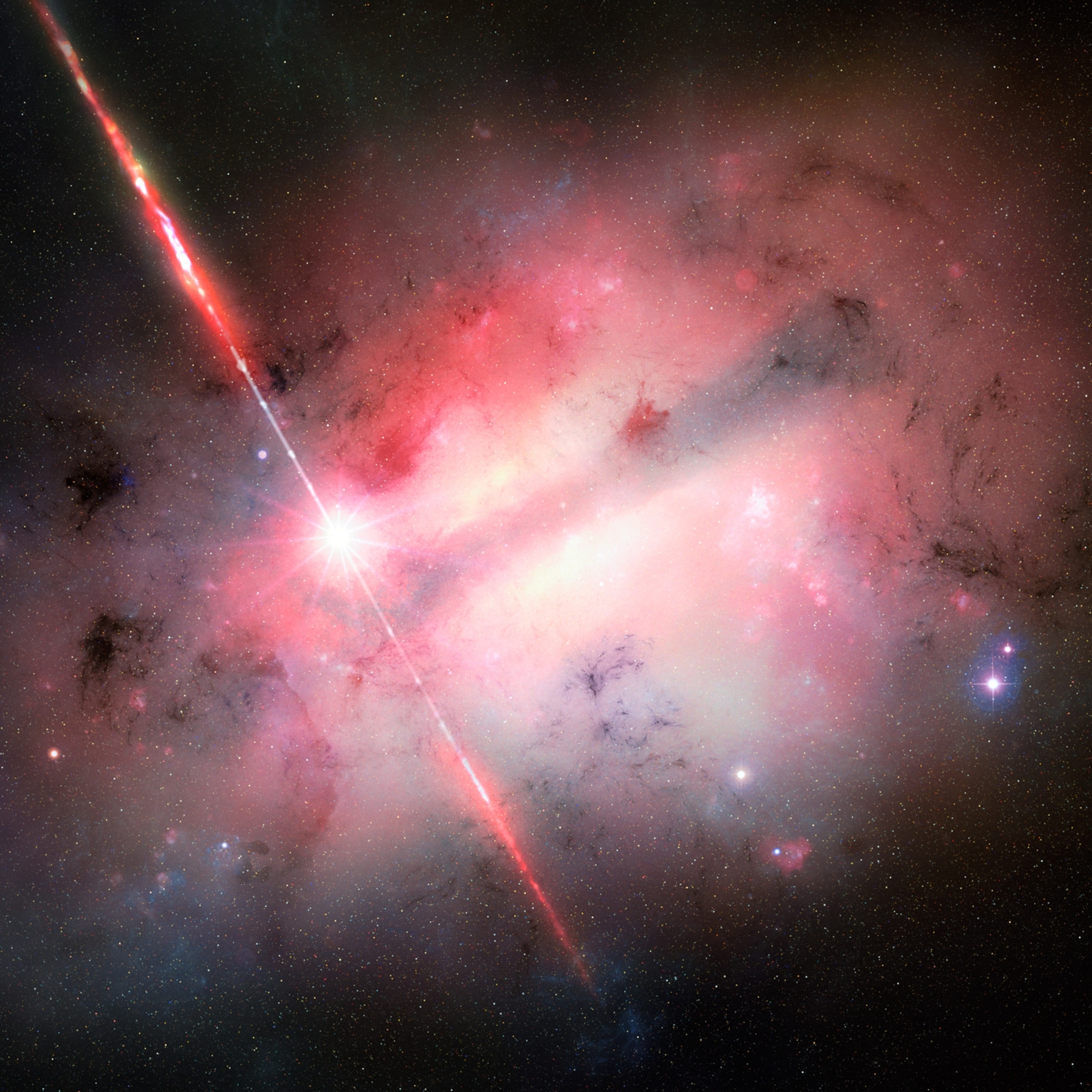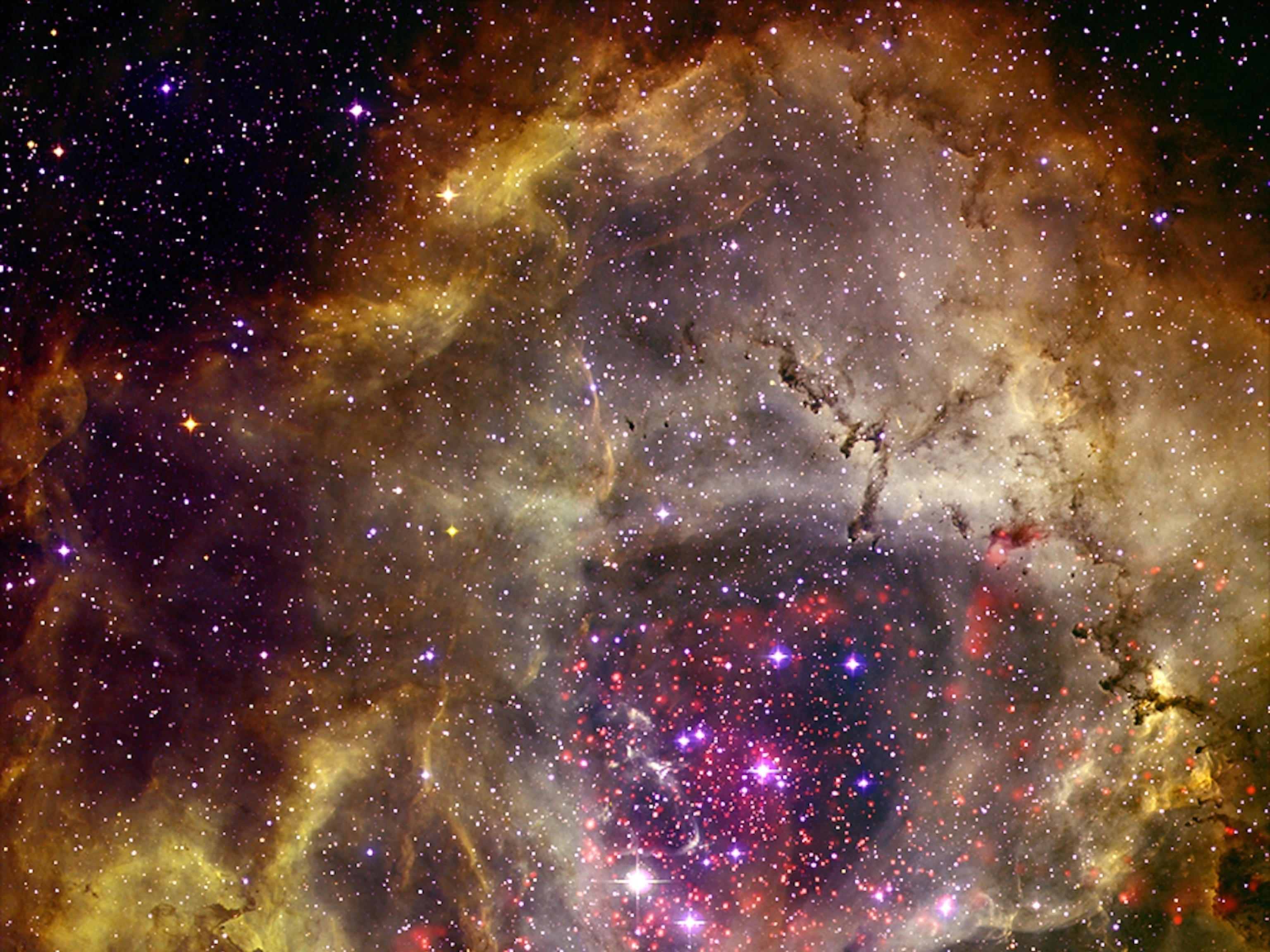Dear Chandra: How x-rays became the bright spot in my sky
A theoretical cosmologist reflects on how NASA's flagship x-ray telescope—its first named for a person of color—has inspired her.
Dear Chandra:
I regularly have to sign e-mails as “Chanda (no r)” because people frequently misspell my name. This usually annoys me, but there’s one exception: messages from x-ray astronomers. In that case, it’s an understandable accident. By now, every single x-ray astronomer on Earth has had their career—and muscle memory—touched by you, NASA’s flagship x-ray telescope.
Like Hubble, you are one of the most expensive and significant missions that NASA has ever launched into the sky, and it has forever changed the way we see the universe. You observe space in the x-ray bandwidth with a hundred times greater sensitivity than humans had ever known, revealing some of the universe’s highest-energy phenomena in unprecedented detail.
I was exactly one month shy of turning 17 and leaving for college on July 23, 1999, when you made your giant leap from Earth to the sky alongside five astronauts aboard the space shuttle Columbia. The flight was historic, not least of all because of you, the first space telescope named for a person of color. Also on that mission, three-time astronaut Eileen Collins became the first woman to command a space shuttle.
Columbia’s trip to space wasn’t easy. Collins and her crew had to contend with an electrical short and leaking cooling units damaged during engine ignition to get into orbit. But then, few things have come easy for you, Chandra, ever since you began life in 1976 as the Advanced X-ray Astrophysics Facility, or AXAF.
You were the brainchild of x-ray astronomers Roberto Giacconi and Harvey Tananbaum. The duo envisioned launching an x-ray observatory into space, because that’s the only place where we can see high-energy light properly, since our atmosphere scatters most x-rays away from Earth’s surface. Researchers at NASA’s Marshall Space Flight Center and the Smithsonian Astrophysical Observatory then took the lead on your construction. For 23 years, they’d have to bear the economic mores of 11 U.S. Congresses, the shifting whims of nearly four presidential administrations, and intense debates among astronomers, whose priorities are more diverse and expensive than the government is willing to fund.
At long last, you neared your launch—and got a name change from AXAF, thanks to a global essay contest that garnered entries from all 50 U.S. states and 61 countries. The two winners both suggested naming AXAF for someone who loomed large in the scientific community but had been almost unknown to the general public: Subramanyan Chandrasekhar, the Indian American physicist and 1983 Nobel laureate known to his colleagues simply as Chandra.
Fast Facts: Chandra X-Ray Observatory
Agency: NASA
Launch Date: July 23, 1999
Launch Vehicle: Space Shuttle Columbia (STS-93)
First Image: August 19, 1999
Launch Mass: 12,930 pounds (5,865 kg)
Power Source: 2,350-watt pair of solar arrays
I’m occasionally asked if I was named after Chandra, as if my parents had learned about him when he won the Nobel Prize, dropping the “r” when they named me. Indeed, our two distinct names—both pronounced with a hard ch, not a sh—share the same Sanskrit root and refer to the moon. But Chandra won the prize the year after I was born, for work he had done decades earlier as a graduate student to understand the structure and evolution of stars.
Perhaps Chandra’s most famous result is his namesake Chandrasekhar limit. This is the maximum mass of white dwarfs—small, electron-rich objects that form after medium-mass stars die—before they collapse into black holes.
He had started the work when he was just 20 years old, as a student living and working in British Mandate India. But later, Arthur Eddington, one of the most widely respected astrophysicists of that time period, spent years gaslighting Chandra about this calculation. Historian Arthur I. Miller writes that Chandra never recovered from the depression that followed, which he felt was due in part to racism. Decades later, he would rise to acclaim in physics—and three years after he passed, he would get a telescope named after him.
Just months after you launched, I started walking in Chandra the man’s footsteps, beginning my undergraduate career as a physics and astronomy major. I distinctly remember having to calculate the Chandrasekhar limit; before your launch, that assignment probably would have been many students’ first contact with Chandra. But I was lucky to come of age in time for the Chandra telescope, and I was studying at its headquarters, the Harvard-Smithsonian Center for Astrophysics. Not only did I know who Chandra was, but I spent my days walking through hallways adorned with images of far-off objects in the universe—structures that both Chandras helped us better understand. My professors were the very people who were collecting and analyzing the telescope's images.
One of my projects was to calibrate one of your backup imaging sensors. Rather than throwing it out, the mission scientists had kept it so that I and my lab partner, Ann Marie Cody, now a NASA astronomer, could learn about how advances in quantum mechanics enabled its construction. I wrote my senior thesis on the x-ray emissions around active galactic nuclei—ultrabright compact regions that sometimes occur in the centers of galaxies—under the guidance and support of Chandra scientists Martin Elvis and Jonathan McDowell. To this day, they remain two of the most important mentors and cheerleaders I have had in my career.
As a young Black woman—one of the first such students to navigate the corridors of the Harvard-Smithsonian Center for Astrophysics—it mattered to have this kind of support. And it mattered to see it connected to Chandra, a project named after the only famous non-white theoretical physicist I had ever heard of.
Now that I’m an assistant professor of physics and astronomy at the University of New Hampshire, you’ve continued to play a major role in my life, Chandra. On the one hand, that lab project on your sensors cemented for me that I wanted to be a theoretical physicist. But my heart is forever tethered to the most extreme astrophysical environments, the places that produce a lot of x-rays. So, I’m now a member of three proposed space telescope missions: the x-ray telescopes STROBE-X and eXTP and a gamma-ray explorer called AMEGO.
I’m a dark matter theorist, and one of the things I want to do with STROBE-X is look for evidence of dark matter using observations of neutron stars and emissions from active galactic nuclei. We’ll need your data, too, to do it right. Thankfully, you’ve survived a decade longer than planned, and you’re turning 20 this year, with plans to keep on going under a team led by Director Belinda Wilkes.
The x-ray future is bright— as long as we commit to putting new observatories in the sky. I’m already looking forward to naming STROBE-X: When that essay contest starts, I’ll be submitting an entry about Harriet Tubman, who used astronomy to fight for freedom.
Warmly,
Chanda


